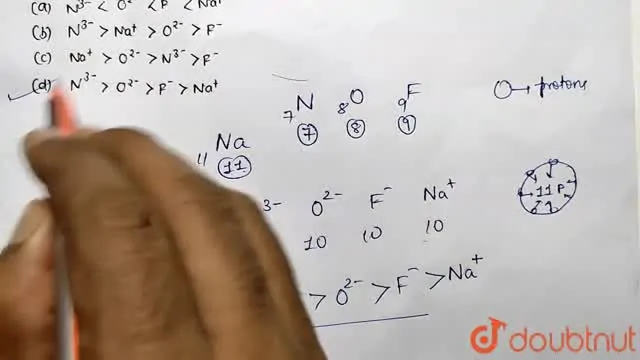The ionic radii of N3−O2−,F−,Na+ follows the order
N3−<O2−<F−<Na+
N3−>Na+>O2−>F−
Na+>O2−>N3−>F−
N3−>O2−>F−>Na+
Step by step video & image solution for The ionic radii of N^(3-) O^(2-), F^-, Na^+ follows the order by Chemistry experts to help you in doubts & scoring excellent marks in Class 12 exams.
Similar Questions
The ionic radii of Li+, Be2+andB3+ follow the order:
View SolutionThe ionic radii of Li+, Be2+andB3+ follow the order:
View SolutionThe ionic radii of N3−,O2− and F− are respectively given by:
View SolutionThe ionic radii of O2−,F−,Na+andMg2+ are in the order :
View SolutionThe correct order of the ionic radii of O−2,N3−,F−,Mg2+,Na+ and Al3+ is .
View SolutionThe radii of F,F−,O and O−2 are in the order of
View SolutionThe correct order of radii of C, N, P, S follows the order
View SolutionThe correct ionic radii order is
View SolutionIf the ionic radii of each K+ and F− are 1.34Å, then tha atomic radii of K and F will be respectively:
View SolutionThe correct order of ionic size of N3−,Na+,F−,Mg2+andO2− and is :
View Solution


